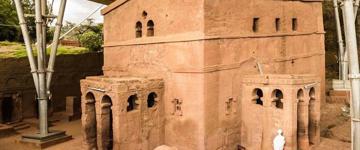Royal castles of Gondar
Though its great days are past, its palaces and castles deserted, Gondar is one of Ethiopia's most fascinating cities and one of the world's most mysterious. By road this ancient settlement, which stands at the foot of tile Simien Mountains, is 750 kilometers north of the capital Addis Ababa.
Set in a landscape of incomparable beauty, Gondar, which became the royal capital of Ethiopia in the 17th century under Emperor Fasiladas who built the first and most famous of its castles, is rich in fabulous history and ancient monuments.
Until the 16th century, the emperors of Ethiopia usually had no fixed capital, instead living in tents in temporary royal camps as they moved around their realms while their family, bodyguard and retinue devoured surplus crops and cut down nearby trees for firewood.
During unsettled periods between the thirteenth and seventeenth centuries, Ethiopian rulers moved their royal camps frequently. King Fasil (Fasiledes) settled in Gondar and established it as a permanent capital in 1636. After Fasil, successive kings continued building, improving the techniques and architectural style. Before its decline in the late eighteenth century, the royal court had developed from a camp into a fortified compound called Fasil Ghebbi, consisting of six major building complexes surrounded by a wall 900 metres long. There are some twenty palaces and royal buildings and thirty churches in the area.
Handicrafts, painting, literature and music flourished in the seventeenth and eighteenth centuries. Fasil Ghebbi is included in the UNESCO World Heritage Sites List. The campaign also covers the royal Fasiledes Bath and the restoration of the celebrated painting in the Church of Debre Berhan Selassie.



